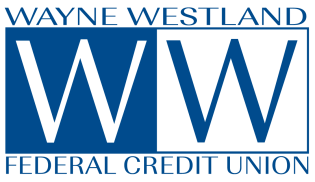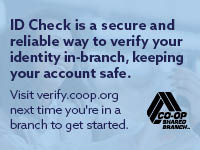When you apply for a business loan the lender will almost always present you with a loan application form to fill out. But there are numerous other factors that will determine whether you are successful, so make sure you pay attention to the following tips. Believe it or not it’s also a great way to check the financial health of your business.
Prepare Yourself
1. Understand Risk
Understanding risk allows you to better understand your Lender. While the Lender is in the business of accepting risk, they are also in the business of minimizing risk. Therefore, in everything you do with your loan application from here on; remember to present a case which minimizes the lender’s risk. They will love you for it!
2. Be Up to Date
Lenders really like applicants who have all their paperwork up to date. This means make sure your BAS is done (and paid); your financial statements and income tax returns are completed (and lodged) for the last 3 financial years; you have paid all your taxes and employee super payments; and you can show your last 6 months bank statements (and if appropriate existing loan statements) without any returned payments or defaults.
3. Know What You Want
Know how much you want to borrow and what you want to do with it. If you are contributing towards it, make sure your funds are in an account which can be shown to the lender. Be prepared to evidence your loan application with a quote, invoice or contract.
4. Know What You’re Worth
It doesn’t matter if you are worth a little or a lot. The important point here is to be truthful and not to exaggerate your assets as you may get caught out and this will ultimately erode your credibility. List all your assets (the things you own), on one side of a piece of paper. These will include your home and any other property; investments such as shares; cash in the bank; what your business is worth; cars and trucks; and personal effects such as jewelry, furniture and other belongings (use the insured value if you’re not sure what they’re worth). List all your liabilities (the things you owe), on the other side of the same paper. These will include your mortgage(s); car and truck loans; any personal loans and credit card debts. After you have added both sides, calculate the difference between the 2 totals and this is what you’re worth.
5. Understand your Profit
The Profit figure a Lender will look at is different to the Taxable Income and even different again to the Profit figure in the financial statements. A Lender will take your Profit from the financial statements (not from the tax return), and add-back interest; depreciation; amortization and income tax. It’s important to disclose this adjusted Profit figure to your Lender for the last 3 financial years.
6. Check your Credit File
Being prepared avoids unpleasant surprises.Therefore it’s better for you to check your credit file from Veda Advantage (who holds your credit data) and see if there are any unfavorable marks against you or your business.
7. Have a Business Plan
A business loan is easier when you can show that you have a clear direction of what you do and what you want to do all of which is written out in a logical manner.
8. Prepare Profit & Loss and Cashflow Forecasts
It is important to have both of these to reflect your future plans as outlined in your Business Plan. This prediction should be done monthly for the next 12 months into the future.
9. Internet Searches
Lenders use the Internet to carry out a search on applicants. Make sure you are aware of any adverse literature about you on the net beforehand and make sure it can be explained.
Carefully Consider the Loan Application Form
10. The 5 Main Areas of any Form
Every loan application will have the following five sections:-
a) What are you worth?
b) How much do you make?
c) How much do you want?
d) Contact Information
e) How are you going to pay it back?
11. Contact Information
Make sure you write the full correct name and ABN (ACN if applicable) and the current registered office as well as the full details of the nearest relative not living with you.
If you have more than one entity and especially if you are using a trust to operate your business, always add a diagram explaining all of the entities, their roles and who are the Directors and Shareholders (and Trustees). The trick is to make it as easy as possible for the Lender.
12. How Are You Going to Pay it Back?
When a Lender wants to know how they are going to get their money back, they call it their exit strategy – and you should give them 3 exit strategies. The first is almost always through the repayment schedule of principal and interest. The second and third may include the sale of some of the businesses assets or through the collection of debts and or the sale of a property or Guarantor’s assets as examples.
13. Answer Queries Quickly
Every application will have a set of queries raised by the Lender – this is normal. It is important that you answer the Lender’s questions as soon as possible. If it is going to take you more than 24 hours to answer a question, call them and let them know why.
14. Additional Information
While most loan application forms don’t allow for it, it is a good idea to attach the Business Plan to the application as it provides for a more professional view of the business.
15. Statutory Forms
Every loan application has a statutory set of clauses to sign. Make sure that the correct person and/or officer signs the form; especially the formal loan application and the authority to conduct credit checks.
Understand How a Lender Reads an Application Form
16. Analyse How Much Debt You Have
In this case a Lender compares what you own to the total amount of money you owe. They do this by dividing the total assets by the total liabilities. For example, if the total of all the things you own (assets) amount to $500,000 and all of the money you owe (liabilities) is $275,000 – the calculation is $500,000 divided by $275,000 which is 1.8 (this means you have 1.8 times more assets than liabilities). The result they look for is 1.5 or higher and anything towards 2.0 is considered good. Different Lenders have different rules.
17. Interest Cover
This analysis refers to how much Profit (based on the calculation in point 5) there is to pay for all of the interest including the interest arising from the new loan application. This calculation is achieved by dividing the (adjusted) Profit by the new interest expense. For example, if the adjusted Profit was $200,000 pa and your interest before the new loan was $80,000 pa and the interest on the new loan was going to be $35,000 per annum – the calculation is $200,000 divided by ($80,000 + $35,000) which is 1.7. The lowest acceptable result is usually 1.5 but anything around 1.75 or higher makes your application all that much easier. Again different lenders have different rules.
Find the Right Lender
18. Research
A successful loan application sometimes is as simple as finding the right lender. Don’t lodge a loan application until you have interviewed a Lender’s commercial manager and are confident that your business loan application fits within their lending guidelines. It is not unusual to interview 3 or 4 Lenders before finding the right one. Make sure you interview both Banks and Non-Banks.
19. Commercial Brokers
Don’t be afraid of using a Commercial Broker, as they are in the business of looking for Commercial Loans every day and work on a success fee which is good for them and you. You will have to pay them a fee but this can be offset against a possible savings in interest rates. Make sure they are referred to you and like Lenders, that you interview them.
20. Keep Your New Loan On Track
One of the best ways to make sure you get a new business loan is by making sure you properly complied with your old business loan. Pay your interest and repayments on time; comply with your loan obligations by providing accounts and /tax returns on time and work on building your relationship with the lender.
H/T Source: EasyBizFinance.com


